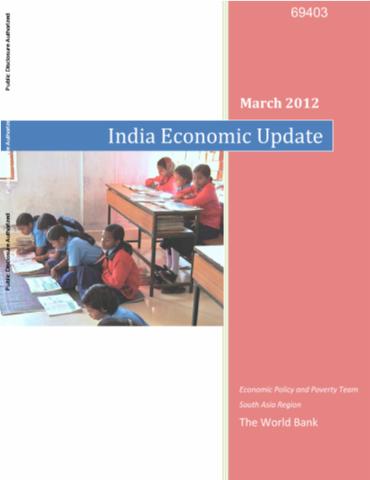Resource information
In 2011, India's economic growth has slowed to below 7 percent and the stock markets mirrored the weakening economic conditions, but recovered somewhat in early 2012. Industrial sector output growth briefly slipped into negative territory. On the demand side, fixed investment and consumption growth slowed. India's exports were growing very strongly through 2011 despite the worsening economic conditions in Europe, which continued to be India's most important export market. The balance of payments continued to be in surplus during April-September 2011, but the Reserve Bank of India (RBI) reserves declined by a small amount since then. The rupee nevertheless depreciated by 20 percent between August and December, before recovering somewhat in early 2012. Macroeconomic policies presented a mixed picture: the central government is likely to miss the ambitious target for fiscal consolidation it had set in the FY2011-12 budget by about one percent of Gross Domestic Product (GDP). Slippages are due to lower-than-expected revenues and increasing outlays on subsidies, which had been given low budgetary allocations in anticipation of strong policy changes, which failed to materialize. In India, the slowdown in GDP growth witnessed over the last two quarters is likely to extend into the coming fiscal year because of the weakness in investment. In FY2011-12 and FY2012-13, GDP growth is forecast to reach around 7-7.5 percent, a significant slowdown from the 9-10 percent growth in the run-up to the global financial crisis. The slowdown is at least partly caused by structural problems (power projects facing delays due to the lack of coal and gas feedstock, mining and the telecom sectors hit by corruption scandals, unavailability of land and infrastructure).


